In this series, I discuss briefly a few ideas
and my own thoughts on the subject of photography (particularly, but not
limited to, of fauna, flora and the environment). This is the third instalment
in the series and deals with aspects of the photographic process.
4. The image is king, technique just a
pawn
Once you know what you wish to express about a
particular subject or scene, once your observation is ready to be transformed
into a photograph, then, and only then, should technique take over. Of course,
beforehand you need to become competent with any techniques you will be using;
you will have to know and understand too any and all of your camera’s settings (and
how to change and select them). However, any decision about the appropriate
camera-lens combination, your intended viewpoint selection, the appropriate ISO
(ASA) rating of the camera’s sensor (film type selection if you are using
film), the appropriate f-stop and the appropriate exposure time for your final
intended image can only be taken once you can envisage, ‘see’, the final image
in your mind.
For the vast majority of images you wish to
capture, your interpretation does not require more than the correct use of the
appropriate equipment and camera settings. Always remember that YOU are the
visionary; a camera does not see, it has no vision of its own, it can not
compose an image. Gadgets and tricks rarely enhance the visual communication in
my opinion. Does your interpretation
really require the use of a filter? (It may – then use it knowledgeably.) Does your intended final image require fill-in
flash or the use of a strobe, or can you rely solely on the existing
natural light? (Invariably I pose this question when I am busy with
macrophotography.) Does the way you are
using your drone, your miniature action-camera, your radio-controlled
camera-buggy enhance your photographic communication, or are you using them
simply because you have seen other photographers use such equipment?
Of special relevance here is digital
post-processing and photo-manipulation. “Shoot
in RAW and you can complete the photographic process, fix the image later,”
is an oft quoted adage. You can then delete what should not be there, add in
what should have been included, change the lighting and the background; you can
even combine species together that would not normally interact – a polar bear
hunting a penguin, let us say – and, voila,
you have an image that simply blooms. Alternatively, you can just download
images from the web and use those; you then save yourself the hassle of all
that travel, the sweat and the tears, the hard work. This has happened and does
happen still.
Do not misunderstand; all digital images have
to be processed, more or less so, after capture. With digital files, the amount
of post-processing depends on your interpretation of the subject and on your
intentions that you wish to communicate through the photograph. Used to these
ends, digital processing is no less necessary than the chemical development of
film (which process is also manipulated to achieve specific, enhanced qualities
in the negative for printing of the final image). Moreover, digital
manipulation allows for easy access to processes that in the past were
difficult to achieve, for example, black-and-white processing and printing, the
use of bas-relief, solarisation and other (formerly) darkroom techniques.
Nevertheless, whatever manipulation you intend
to perform after releasing the shutter should have been considered and should
be part of your initial previsualisation. All manipulation should remain part
of the process of communication and must enhance the final image and the resulting
stimulation that it will provide the viewer’s imagination. So your digital file
(or film negative), captured at the moment you released the shutter, should be
as close to the final, imagined image as it can possibly be. Manipulation alone
can not create a more polished product from a badly conceived, poorly executed
picture file or negative.
A further possible hick-up in your voyage as a
photographer concerns whether and how much of the information provided by
others you wish to incorporate into your own technique and style. Reading about
another photographer's techniques is fun and can provide you with valuable
clues for use in your own photo-interpretation. You may discover new ways of
doing things technically. While reading you may suddenly think of a simple way
to tweak your own photography. However, this information alone, taken on board
willy-nilly without careful consideration, will not make you a better
photographer. What works well for others may not work for you. The great danger
in adopting technique as gospel is, of course, that it will set you firmly on
the road to simple copying (and frustration – you may never possess that lens, that camera, that
gadget!).
Nothing beats previsualisation. Nothing beats
your own attempt at interpretation. If you are serious about the process of
photography, nothing beats your own (limited, exciting, hampered, excellent,
inadequate, competent, disillusioning, emotionally satisfying, challenging,
sensational) stimulation of the imagination to seek out and capture good
photographs.
5. It was the hammer!
Competent photographers will create exciting
images with homemade cereal-box pinhole cameras. So do not blame your tools –
ever. Granted, if you do not possess long glass you will never get an image of
a leopard's eye on free range, but you might get the eye of a Leopard Toad.
This may equally fulfil your needs and your intention. Know your equipment,
both its limitations and its strengths, and shape or adapt your vision
accordingly. Use your equipment’s strengths and your own to maximum effect;
explore and find ways to lessen the limitations. If necessary, hire equipment
and rather spend your hard-earned cash on memory cards (or film), extra
batteries and, most importantly, more regular opportunities to create
photographs.
If you really find yourself in a situation
where you consider a specific piece of equipment to be indispensable (and you
simply do not have access to it), re-visualise, re-compose, but do not walk
away from the possible subject or opportunity. You may not be able to capture the
image you initially intended to take, but you may get a dozen or more
photographs that are equally exciting simply by changing your attitude and
motivation. So often photographers miss opportunities. Been there!
6. Twenty metres back and six steps left
If you embrace photography as a form of visual
communication, you will develop your own personal style. Your own vision
depends not on how different you can make your photographs, but rather on how
you feel about and approach your subject matter differently. Your imagination
is not the consequence of your photographs; imagination precedes expression and
so your personal style develops from, and is the consequence of, your own,
unique imagination. (In the mind of the audience, the process is reversed, of
course, as your style and your images elicit novel responses in the viewer's
imagination.)
How many photographs of lion (closely cropped,
side-on, glint in the eye, four feet visible, tail up, background blurred to
non-existence) can you recall? Thousands, if you could remember them all. What
do all these images express? This is a
lion, full stop! Sadly, however, the being itself – the majesty, the power,
the hunger in the hunter – has been left behind in the veld. Know what you want
to express. Change your point of view, try a different angle, a different
perspective and, above all, change your interpretation. Then you will begin to
communicate by way of your images.
Back off! Including the environment and
incorporating some of its elements (lines, shapes, rhythms, textures) in the
composition, will invariably make for a more interesting interpretation of the
subject. Isolating your subject from the background by using a long focal length
and choosing a shallow depth-of-field is not the only way to give it
pre-eminence in your image. Similarly, landscapes do not need to be crisp
front-to-back, nor do they have to be captured with a wide-angle lens. Often an
intimate glimpse of a part of the landscape reveals so much more than the wider
panoramic view would do. Experiment, maximise your expressive communication and
satisfy your individual vision.
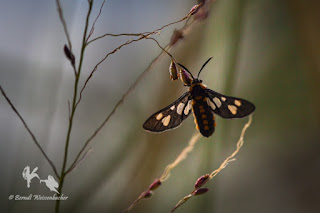
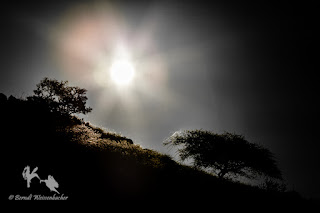

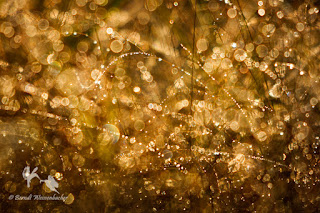
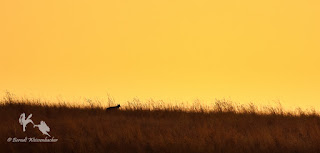
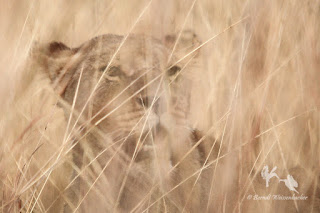
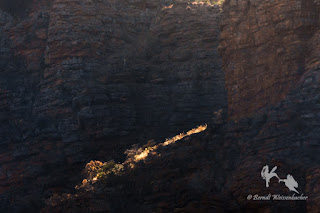
No comments:
Post a Comment